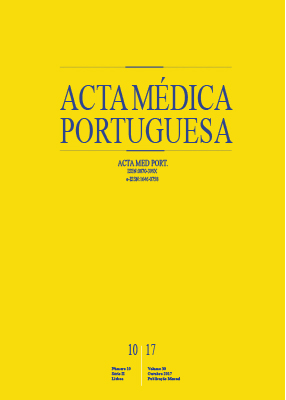Partial Red Blood Cell Exchange in Children and Young Patients with Sickle Cell Disease: Manual Versus Automated Procedure
DOI:
https://doi.org/10.20344/amp.8228Keywords:
Adolescent, Anemia, Sickle Cell, Child, Erythrocyte Transfusion/methods, Young AdultAbstract
Introduction: The benefits of manual versus automated red blood cell exchange have rarely been documented and studies in young sickle cell disease patients are scarce. We aim to describe and compare our experience in these two procedures.
Material and Methods: Young patients (≤ 21 years old) who underwent manual- or automated-red blood cell exchange for prevention or treatment of sickle cell disease complications were included. Clinical, technical and hematological data were prospectively recorded and analyzed.
Results: Ninety-four red blood cell exchange sessions were performed over a period of 68 months, including 57 manual and 37 automated, 63 for chronic complications prevention, 30 for acute complications and one in the pre-operative setting. Mean decrease in sickle hemoglobin levels was higher in automated-red blood cell exchange (p < 0.001) and permitted a higher sickle hemoglobin level decrease per volume removed (p < 0.001), while hemoglobin and hematocrit remained stable. Ferritin levels on chronic patients decreased 54%. Most frequent concern was catheter outflow obstruction on manual-red blood cell exchange and access alarm on automated-red blood cell exchange. No major complication or alloimunization was recorded.
Discussion: Automated-red blood cell exchange decreased sickle hemoglobin levels more efficiently than manual procedure in the setting of acute and chronic complications of sickle cell disease, with minor technical concerns mainly due to vascular access. The threshold of sickle hemoglobin should be individualized for clinical and hematological goals. In our cohort of young patients, the need for an acceptable venous access was a limiting factor, but iron-overload was avoided.
Conclusion: Automated red blood cell exchange is safe and well tolerated. It permits a higher sickle hemoglobin removal efficacy, better volume status control and iron-overload avoidance.
Downloads
Downloads
Published
How to Cite
Issue
Section
License
All the articles published in the AMP are open access and comply with the requirements of funding agencies or academic institutions. The AMP is governed by the terms of the Creative Commons ‘Attribution – Non-Commercial Use - (CC-BY-NC)’ license, regarding the use by third parties.
It is the author’s responsibility to obtain approval for the reproduction of figures, tables, etc. from other publications.
Upon acceptance of an article for publication, the authors will be asked to complete the ICMJE “Copyright Liability and Copyright Sharing Statement “(http://www.actamedicaportuguesa.com/info/AMP-NormasPublicacao.pdf) and the “Declaration of Potential Conflicts of Interest” (http:// www.icmje.org/conflicts-of-interest). An e-mail will be sent to the corresponding author to acknowledge receipt of the manuscript.
After publication, the authors are authorised to make their articles available in repositories of their institutions of origin, as long as they always mention where they were published and according to the Creative Commons license.









